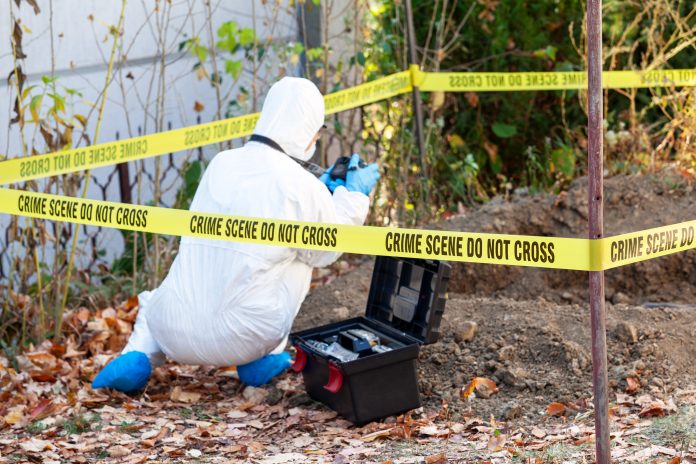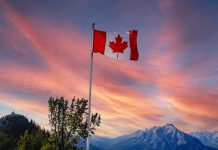Victor W. Weedn, MD, JD, Chief Medical Examiner at Maryland Office of the Chief Medical Examiner, describes the importance of medicolegal death investigation, an important function for governments around the world
Deaths are the epitome of injustice that can spark civil unrest, that are an objective, stark endpoint for public health data, and that disrupt family order. Medical investigations into the cause of deaths is an important function for governments around the world.
Medicolegal death investigation on display
The Derek Chauvin trial over the death of George Floyd, as well as many of the “trials of the century,” involves a criminal trial where the cause of death is at issue. The attention of the world to these trials should be ample proof of the importance to society of forensic pathology and medicolegal death investigation.
Criminal Investigations v. medical investigations of death
Medicolegal death investigation is different from the death investigations of the police. Homicide detectives answer the question “Who did it?” Medical examiners and coroners, and police forensic pathology consultants in some countries, answer the question “How did he die?”
In the U.S., the government agencies with non-emergency authority to investigate deaths to determine the cause and manner (natural, accident, suicide, homicide, or undetermined) of death are medical examiner and coroner offices – not law enforcement or public health agencies. This authority allows staff to enter the death scene, seize the body, take samples of fluids and tissues, as well as interview witnesses and obtain reports. In fact, the potential of this authority has not been fully realised.
Medical detectives
Quincy, M.E. was the original forensic television hit and there have been many shows and novels since based upon the work of forensic pathologists. There is a forensic pathologist played on each of the CSI kindred shows, such as “Ducky” on NCIS. This popularity speaks to the interesting and important job that forensic pathologists have.
The popular notion of the medical detective is only partially accurate. It is noteworthy that Sir Arthur Conan Doyle was a physician, Sherlock Holmes’ sidekick Watson was a physician, and the mystery series originated from Doyle’s fascination with his medical school professor, Dr Joseph Bell. Forensic pathologists are not detectives acting on speculative hunches and conjecture, but instead, base their determinations on the actual science and medical expertise.
Forensic pathologists
Forensic pathologists in the U.S. spend nine years in postgraduate medical education and training – more than a family practitioner or internist, and forensic pathologists get more “tissue time” than surgeons. Police reports, medical records, emergency medical service run sheets, and family and other witness statements provide the history and the autopsy is the physical examination by the forensic pathologist.
Medicolegal death investigation
Roughly 1% of the population dies each year. In 2020, the U.S. population was over 330 million and there were over 3.3 million deaths. Approximately one-third of these deaths were referred to a medical examiner or coroner’s office for investigation because they are non-natural, suspicious, unexpected, in-custody deaths, medically unattended, or otherwise done in the public interest. Of these referrals, more than half a million autopsies will be performed. Forensic pathologists see more natural and accidental deaths than homicides, but because medical examiner offices see all homicides and there are fewer forensic pathologists than homicide detectives, they see more homicides than homicide detectives.
Mortality data
Mortality data defines crises. The U.S. Centers for Disease Control and Prevention (CDC) reports that 69,710 people died of opioid overdoses in the U.S. during 2020. 2,606 died in New York City’s World Trade Center disaster on September 11, 2001. 1,517 lives were lost when the Titanic sank. Mortality data also define areas of concern. Nearly 20,000 Americans died of firearms in 2020. 38,680 Americans died of traffic accidents in 2020. In the U.S., over 1,000 Hispanic or Latino workers die annually of work-related injuries and over 10 fatalities occur per working hour of every 100,000 construction workers.
Mortality data will also be the measure of the success of the government response to the crisis or concern. Although the CDC and departments of vital statistics report these data, they come from the death certificates completed by medical and coroner offices. A White House study found that 31 federal programs depend upon such data and many local agencies will also depend on the data.
Preventing deaths
Beyond providing public health data statistics for policymakers and others, forensic pathologists work to prevent premature deaths. Forensic pathologists testify in murder trials which may result in the incarceration of the perpetrator. Recognition of unsafe medical devices or consumer products may prevent other lives lost. Their work has led to the legal requirement of driver’s licenses, handgun laws, infant crib regulations, and the instructions of flight attendants.
Surveillance
Forensic pathologists play an important surveillance role. The Four Corners hantavirus epidemic was first recognised by a forensic pathologist in New Mexico. This surveillance role extends to homeland security threats, including bioterrorist and chemical terrorist events. Although it is often thought that emergency room doctors will be the first to recognise such cases, in fact, when first presenting the symptoms are often vague and may be unrecognised, but by the time of death such cases are far more obvious and more significant testing of the tissues can be conducted.
Promoting justice
Forensic pathologists promote justice, conducting their investigations based on science. They may recognise that a case is not a homicide as originally thought — or vice versa.
Human rights
Forensic pathologists also have a human rights role of talking truth-to-power by calling out and documenting cases of injury and abuse when recognised. The Minnesota Protocol is a United Nations guide to the investigation of potentially unlawful deaths. Forensic pathologists may be called to assist in cases in underdeveloped countries, but cases such as the in-custody death of George Floyd make clear that human rights are an issue at home as well as abroad.
Working for families
Talking with family members is a very important role of the medical examiner and coroner offices. Providing answers to families is essential for closure after the deaths of their loved one. It helps the community to heal. Medical examiners and coroners in the U.S. are responsible for the identification of the human remains after mass disasters and their return to the next of kin, which is critical to community resilience.
Weighty decisions
Forensic pathologists feel the weight of their determinations of the cause and manner of death where the murder suspect, who has claimed innocence. They also feel joy when they prevent deaths through recognition of heritable diseases or unsafe products or practices. Forensic pathologists go to their graves knowing that they made a difference in the world.
Please note: This is a commercial profile











